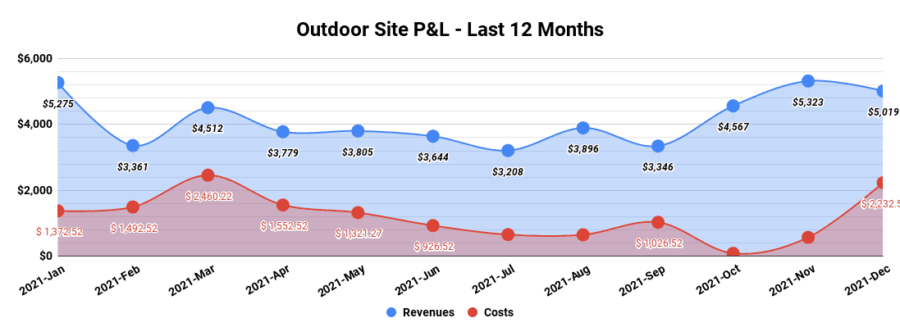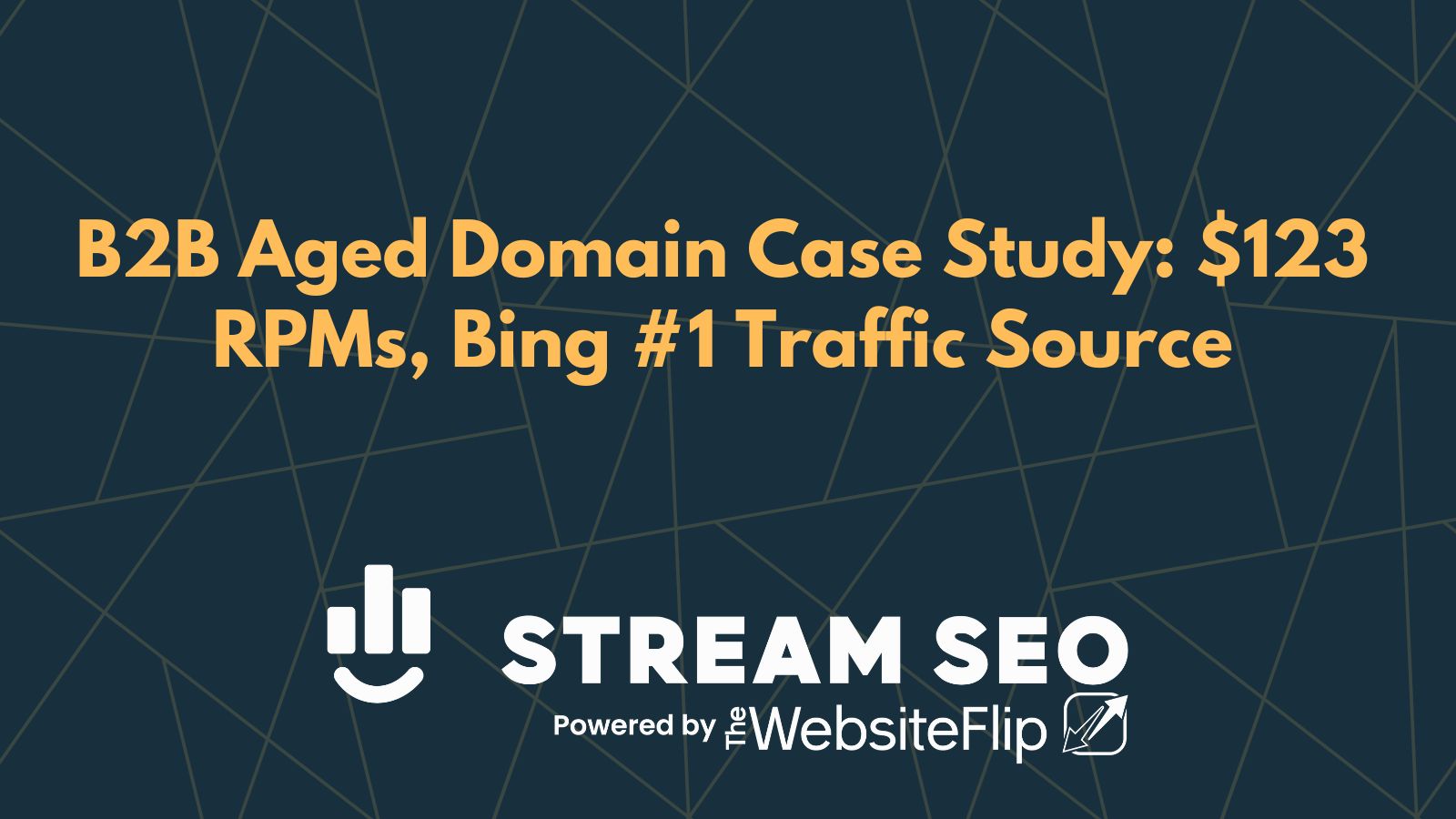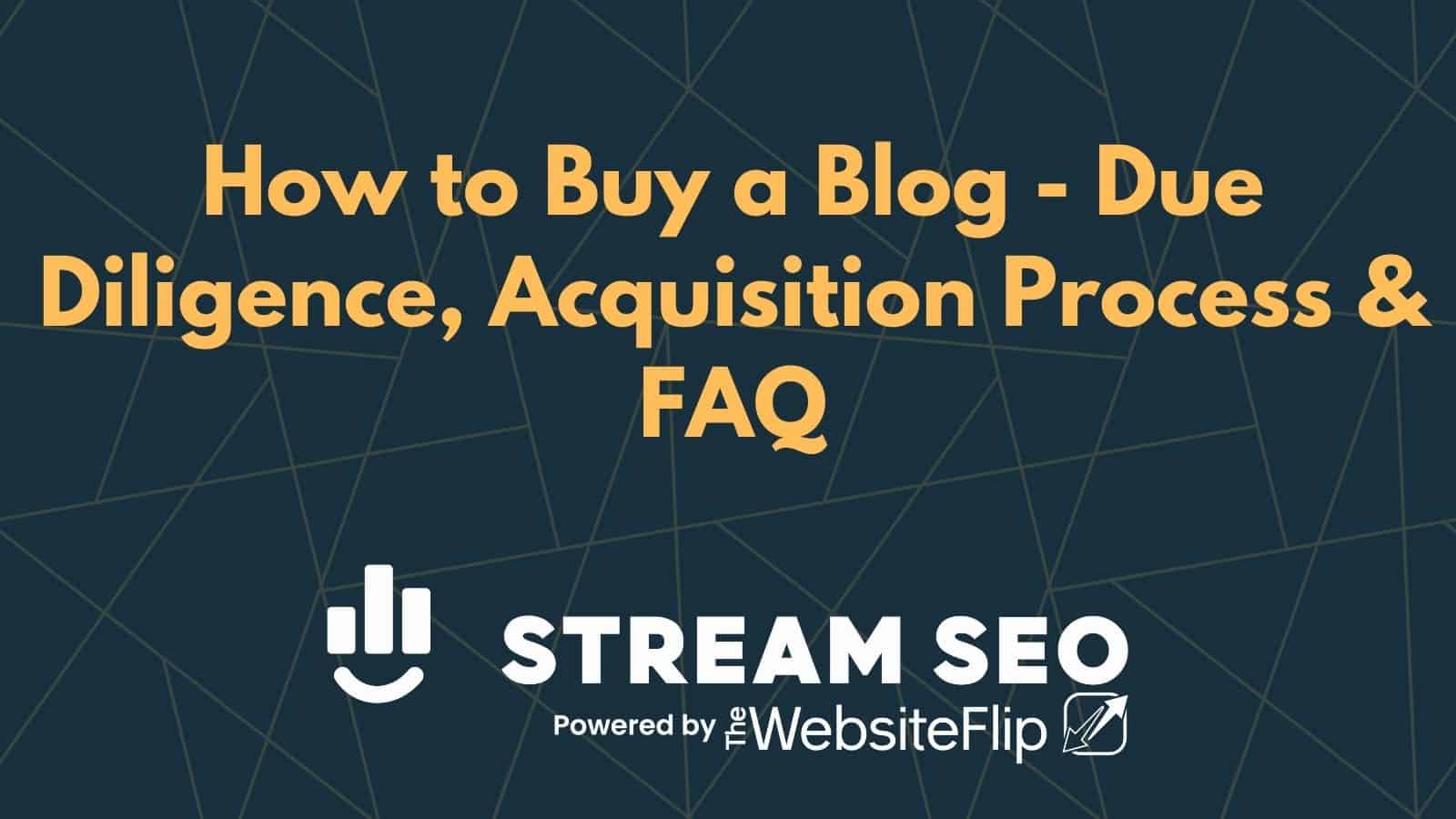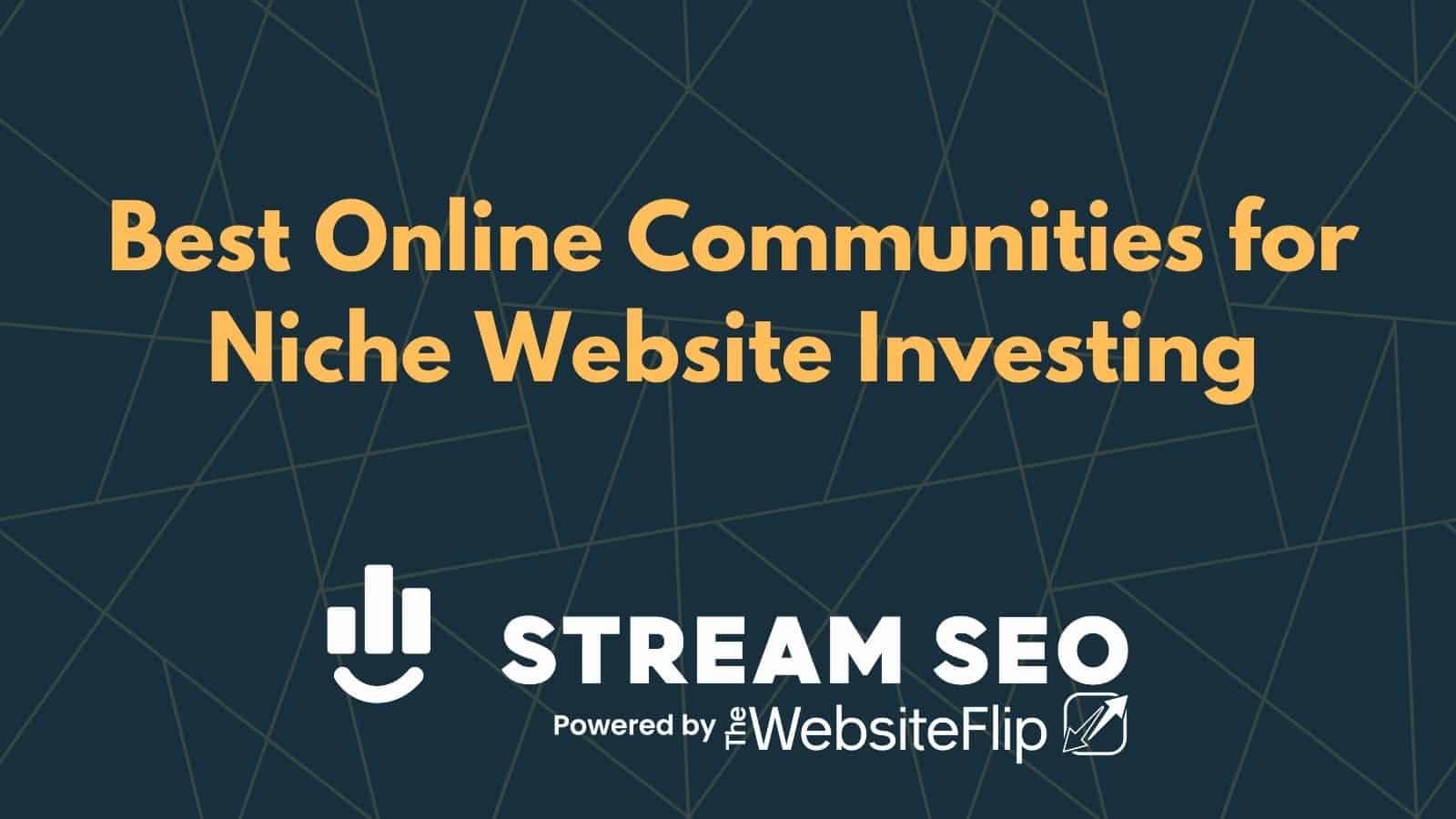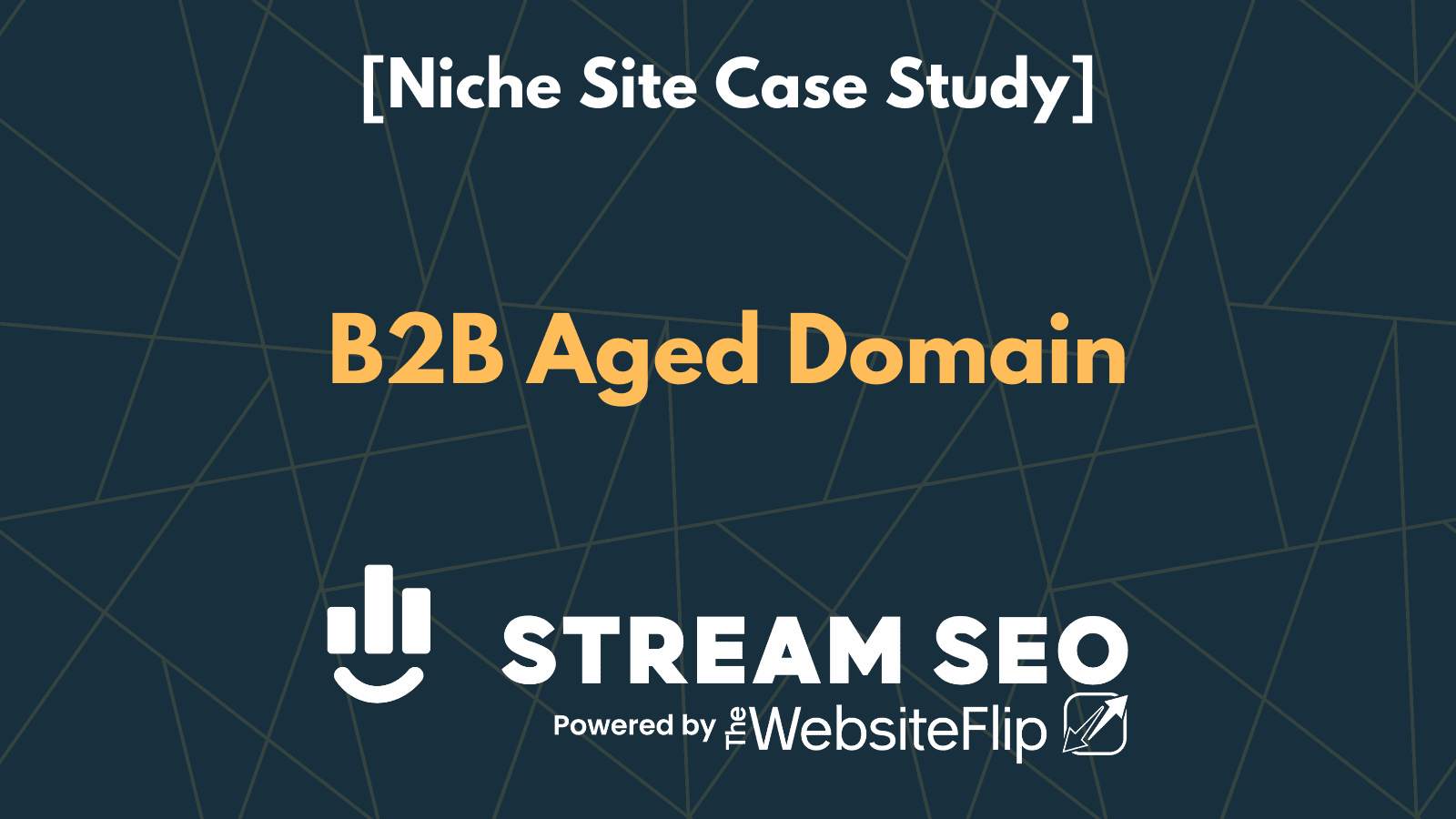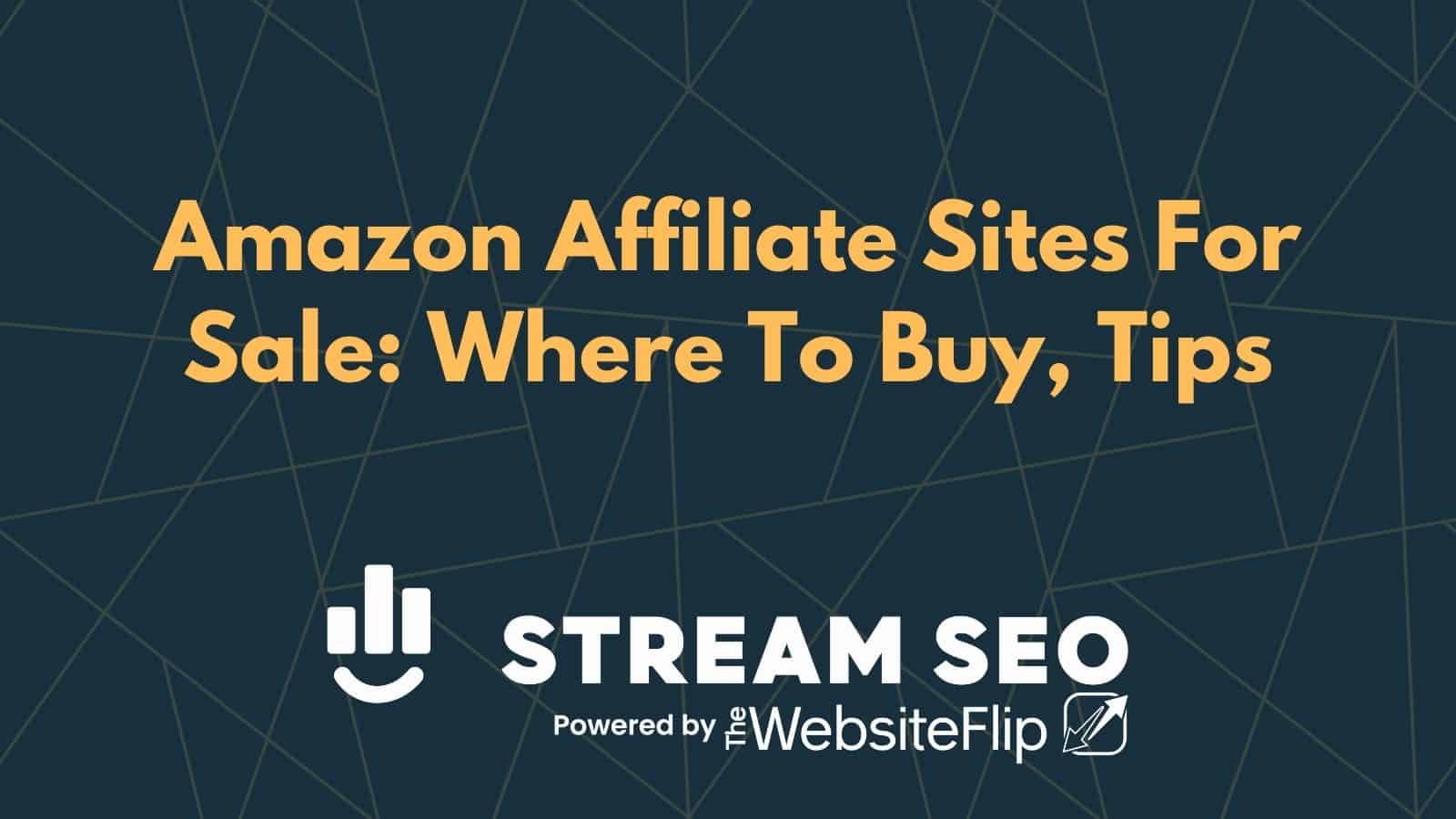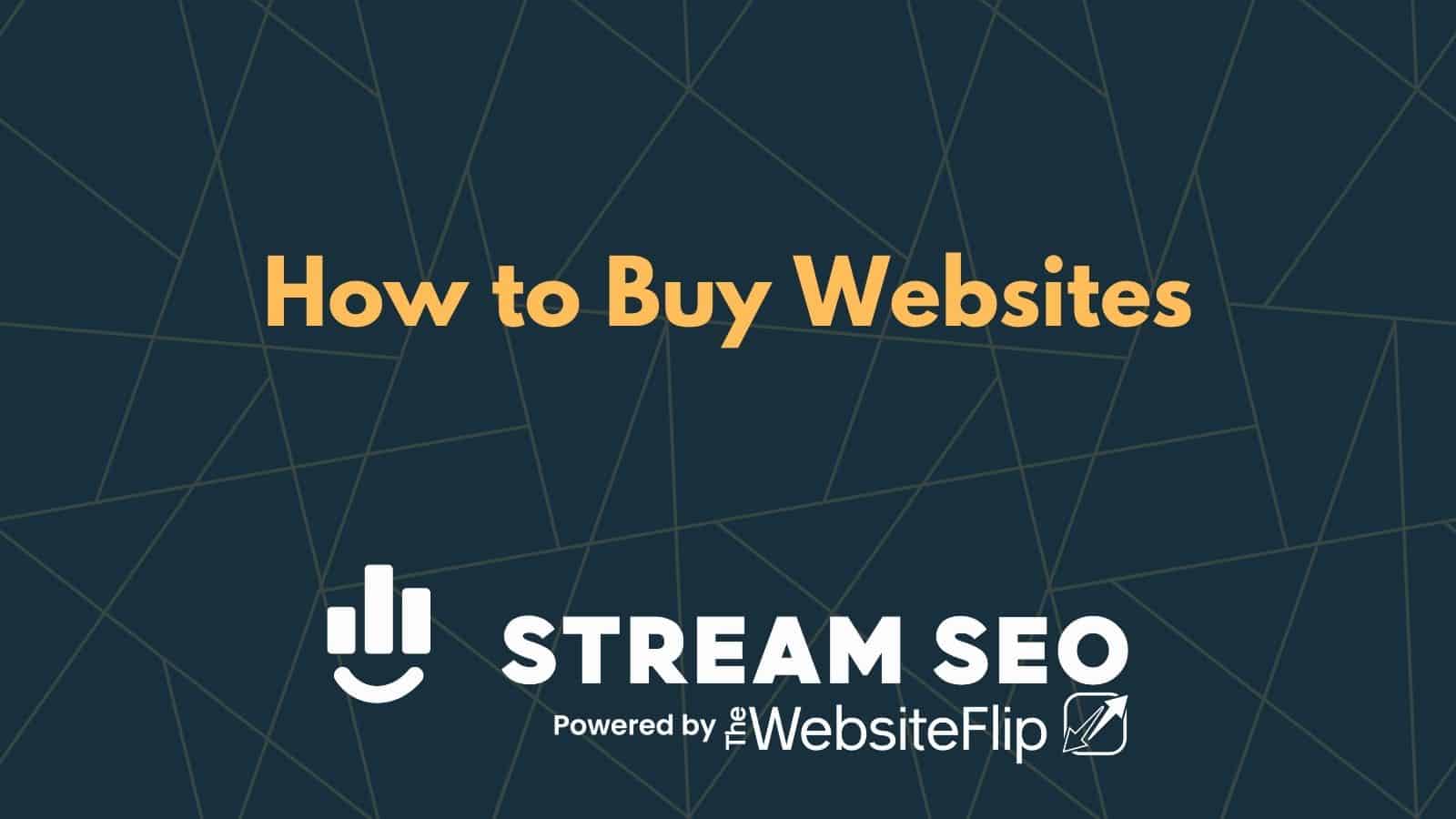Website flipping can be an incredibly profitable endeavor, and lead to life-changing amounts of money over time when done well. Learning to flip websites does take time, a lot of skill, and experience makes a difference.
The good news is that the many skills needed to be a successful website flipper can be learned with enough time and hands-on practice and experience.
We’ll go through the process of getting started with website flipping and what you need to know to jump in.
Let’s get to it!
Table of Contents
What is Website Flipping? The Business Model
Website flipping is the practice of buying a website at price X, spending multiple months improving traffic and revenue, and then selling at the higher price Y. The difference between the selling price Y and X plus your expenses equals the profit.
For example, you buy a website that was making $250 a month for $10,000. Over the next year, you add massive amounts of content, improve site design, improve monetization. To keep it simple, we’ll say the money the site made month to month as cash flow paid for your expenses.
After a year the site is making $2,000 a month. You get the same 40x multiple and so sell the site for $80,000.
That’s a $70,000 profit.
That’s the basic model of website flipping and this is a pretty basic example. I’ve had sites that went from low earnings of a couple of hundred dollars a month to up to $10,000 a month, which leads to a very nice six-figure payday.
The model works and it is repeatable, but it does take skill to pull off.
How Much Money Can You Make Flipping Websites?
Flipping websites can be an extremely profitable endeavor. The process of how a profit is made is simple to understand, it’s the execution that takes skill and experience.
You buy a profitable website. Increase the monthly profits, hopefully drastically, and then after a full 6 to 12 months to improve the average monthly income L6M you sell and the difference is the profit.
So how do you make money from website flipping? Buy a high-potential low-value site, improve it dramatically, and then sell high.
Simple in concept, harder to pull off. The good news is that the skills to add traffic, improve SEO, and improve monetization are all skills that can be learned from practice and repetition.
How much money can be made from flipping websites? Take a look at just three recent examples below from my flips.
- Outdoor niche: The site was bought for $23,000 in early (April) 2020. At the time this outdoor blog was earning $300/mo. Improved SEO, traffic, and monetization. Earnings jumped to $3,000-$6,000 per month, varying based on the season. This website was then sold for $175,000, a 44X multiple.
- Health/Wellness niche: The site was bought for $5,650 in July 2020. The site averaged $300/mo in earnings when acquired and scaled up to $936/mo on average. Sold five months later in December 2020 for $30,100.
- Dating niche: This site was acquired in early 2019 for $36,000 purchase price and was earning roughly $1,000/mo. I have kept this site for cash flow/passive income and this site currently earns $9,000/mo. That means the site is valued at $315,000 to $350,000.
These examples show just how possible it is to make a full-time income flipping websites once you’ve mastered the skills needed to build up and improve these sites.
Buying vs Flipping a Website: Pros and Cons
Should you buy a site and flip it, or buy it and hold it for passive income? This is a question every website flipper will need to wrestle with at some point. As Example 3 above shows, there are times I’ll keep a site instead of flipping it.
How do you know which decision to make?
A lot depends on your current situation.
Reasons for flipping the site
- This is your first sale and you need to learn this part of the process
- You could use funds for more investments
- You don’t have interest in maintaining the blog
- You found a great opportunity in a competitive space, but worry about getting squeezed out if authority sites in the niche follow suite
- The net profit is especially large with this deal
- You have too many projects on your plate to manage all of them
Reasons for keeping the site
- Provides extremely high-level cash flow
- Unusually strong combination of backlinks, content, and branding
- Topic that is always interesting to you
- High return for a low amount of maintenance
- You could use more cash flow/passive income for monthly operations
Ask yourself these questions and take the appropriate situations based on the site, the market, and your current situation.
11 Step Process to Website Flipping
The process for flipping a website can be broken down step-by-step into an 11 step process.
- Find a website to buy from marketplaces
- Perform rigorous due diligence
- Take note of any major easy wins
- Make an offer and negotiate the sale price
- Transfer assets
- Close the deal
- Perform easy wins to grow the website
- Wait 6-12 months for growth to show
- Position the site for sale
- Find a buyer
- Sell the site
These steps involve varying amounts of work and time, but at the end of the day every website flip is going to follow this basic process.
3 Aspects of a Good Website to Buy & Flip
There are three major things to look for when searching for a good flipping candidate. These are a profitable niche, sites requiring moderate tweaks (not massive overhauls), and strong domains with a good history.
1. Profitable Niche
Some niches are simply more profitable than others. Being cautious about YMYL topics that are regulated like medicine or law, there are still many niches that have many products, affiliate programs, and a high RPM from ads.
If a niche consistently has $20 RPM from Mediavine while another has $9 average RPM, I know the second niche will likely take more work and less upside than the first for a profitable flip.
2. Moderate Tweaks Over Massive Overhauls
Sites requiring massive overhauls not only require more work but also carry more risk with them. They also tend to be more expensive, which cuts into that final profit.
The best candidates have obvious moderate tweaks that can produce huge results without having to do a massive overhaul.
Examples would include:
- Improving from a terrible shared hosting plan to good high-speed hosting
- Taking an AdSense-only site and going to a more profitable ad provider
- Adding affiliate offers/links to a site with none
- Adding categories and internal links to a site without either
3. Strong Domains & Good Site History
A strong domain name that is short, easy to brand, easy to spell, and easy to remember is going to be in demand when you sell on a flip. Good domain names grab attention and increase the number of potential buyers.
If the site has a long history over multiple years, has never had a spammy or “bad neighborhood” site on it, and has some good backlinks then it starts looking very good as a potential flipping target.
4 Red Flags When Doing Due Diligence
I’m always looking for an excuse to walk away from a deal. If these red flags show up, that’s a sign it’s time to walk and find something better/safer.
1. False Traffic Data
This is a deal killer. Anyone dishonest about the traffic or trying to pull a fast one to inflate numbers (paid social traffic, bot traffic, etc) is not someone I want to do a deal with. Always look for false traffic data and walk away from deals that have it.
2. Verify Earnings
A seller should have no issue with sharing earnings information, and there are several ways to confirm earnings info. Pay attention to any situation where the earnings seem disproportionate to the traffic or sales.
Considering the true value of the asset depends on earnings, it’s important to make sure those earnings numbers are correct. If anything is off here or the seller doesn’t want to verify, walk away.
3. Low Quality Backlinks
Low quality backlinks can indicate a history of Google penalties, or make a site more likely to receive them in the future. This could also indicate PBN use or spammy SEO tactics, all things that should be avoided.
4. Bad Website History
Did a website dedicated to lotteries, gambling, or the adult industry used to sit on that domain? That is a big problem as that stigma tends to stay with a domain name in Google’s eyes, and that can be difficult if not impossible to overcome.
Where to Buy and Sell Websites?
Many options exist for buying and selling websites, but three in particular stick out for me.
Direct Purchase
Direct purchase can lead to some of the best deals. There’s less competition for a site that isn’t openly on sale, and that means an opportunity to find a hidden gem. Direct outreach often involves more work but can lead to fantastic deals.
Facebook Groups
Many Facebook groups focus on buying and selling sites. These are worth joining to look for deals.
Facebook Groups devoted to certain niches can also be a good place to look for potential private direct purchase deals.
Website Brokers & Marketplaces
Multiple great options exist among brokers and marketplaces to buy or sell websites. While it can even be overwhelming how many options are out there if you keep to this shortlist you will find good options for selling and plenty of buying opportunities.
- Flippa
- Empire Flippers
- FE International
- Motion Invest
- Investors Club
- MicroAcquire
Read our article on the best website brokers to get a sense of how these various services stack up against each other.
6 Tactics for Growth After Buying A Site
The success of a slip relies heavily on just how much you can grow the site after buying it. The sooner the site’s traffic and revenues grow, the sooner you get the improved monthly average that makes the sale so profitable.
1. Implement Easy Wins
When a small action can create a large positive impact, it makes sense to implement as many of these as quickly as possible. Implementing immediate easy wins is always my first step post-purchase.
2. Publishing More Content
Publish a lot of content targeting low competition keywords. Between those keywords and related longtails, you’ll be able to rank and boost traffic numbers, which boosts revenue.
3. Disavowing Bad Backlinks
Bad backlinks can be a major drag on a website. Even on a site with clear success, bad backlinks can keep it from doing better or be a problem after a future update. Always use Google’s Disavow Tool to disavow bad links.
4. Find More Traffic Sources
Organic traffic is great, but finding more traffic from other sources improves the value of the site and helps buffer from organic rankings changes. Pinterest, Quora, Facebook, Instagram, and YouTube are just some options for finding more traffic.
5. Applying for Higher Paid Networks & Affiliate Programs
AdSense and Amazon are easy to start with, and they tend to pay the least. Moving up to MediaVine or AdThrive can mean massive improvement in ad income while high-paying affiliate programs can offer a significant boost over most Amazon Associates rates.
6. Income Diversification
Income that comes from one source can be easily lost. Income that comes from 5-6 different sources or more can weather changes in commission rates, ad income, and other changes that are inevitable in this business.
How to Flip the Website After Growing It
The following steps are crucial to get the most out of your website when it comes time to flip it.
1. Position for Sale
Too many sellers make the mistake of not positioning for sale. Do the work to make a professional presentation and put the site’s best foot forward for the highest website valuation.
2. Keep Easy Wins Available for New Buyer
Being able to hand a potential buyer a list of quick action items that lets them improve the site is a great way to entice the purchase at the price you want to see.
3. Gather Data & Screenshots
Every sale will require screenshots of traffic and earnings. Having these ahead of time shows professionalism and serious buying intent.
4. List for Sale
When you are fully prepared, decide on the best marketplace or platform for selling your site and list it for sale.
3 Benefits of Website Flipping
Website flipping has major benefits even above and beyond the potential profits.
Low Capital Investment
Good deals are often relatively cheap because you’re spotting sites that are under-optimized. This means they sell for lower than they’d be worth with just a few changes.
Compared to real estate or stocks, buying websites to grow and flip is an extremely low capital investment with a huge ROI potential. If you’re doing all the improvements yourself with no outsourcing the money invested can be especially low.
Easy to Get Started
There is a very low barrier to entry. You need to build a profitable website from scratch to learn the necessary skills, which can cost under $50 for a year.
After flipping that, you have the funding to start looking for deals. If you can afford to buy a site that’s a good deal, you can simply do so.
Demand for Websites Is Growing
The multiples of what websites sell for have skyrocketed the past 5 years. Not that long ago 20x monthly earnings was considered a good multiple. Many sites go for double that – or more.
The idea of a passive income stream, diversifying income, or building a steady income to be job-free continues to drive the demand for profitable sites and what people are willing to pay for them.
3 Downsides of Website Flipping
While I’m a huge fan of website flipping, downsides do exist.
1. Time Investment
Website flipping takes a lot of time investment. Even beyond the initial learning phase, many hours go into editing content, optimizing monetization, and improving a website from top to bottom.
This isn’t something that can be done with 1-2 hours a week on the weekend, it does require time and work.
2. Need for Outsourcing
To flip at any speed you need to outsource. You’ll need to find a reliable tech guy if you’re not tech-savvy. Pushing out 100 pieces of content a month means hiring multiple writers, and training an editor to avoid getting overwhelmed with edits.
Long-term most will need at least one manager to manage outsourcing teams and help train up new freelancers.
Any scaling of a website flipping operation needs outsourced help.
3. No Guarantee of Success
Sometimes a flip doesn’t work out. Even with the overwhelming majority of my website flips being profitable, sometimes there’s a site that just doesn’t take off, especially once outsourcing expenses and time invested are figured in.
While having skills and experience help push the odds in your favor, there is no ironclad guarantee of success.
My Website Flipping Case Studies
Here’s a deeper look at a couple success stories that I’ve had.
Outdoor Site Sold For $175,000
This outdoor site was a major success as far as website flips go. This provided major cash flow while being ramped up for an eventual six-figure flip.
- Bought For: $23,000
- Money Invested: $37,582
- Revenues from Site: $100,938
- Sold For: $175,000
This site saw plenty of examples of volatile traffic, serious work on monetization improvements, and working through Google/Amazon updates.
This was a hobbyist site where the information was good and written by an authority, but monetization and site optimization were terrible. These improvements over a 22-month hold period led to the high payout.
Dating Site Bought for $36,000, Valued at $400,000+
This dating site was bought off of Flippa for $36,000 and at the time was averaging $896/mo in revenues.
The growth on this website from focusing on easy wins and concentrated growth was off the charts. In only 8 months the revenues grew to $6,000+ per month through diversifying revenue streams, negotiating better affiliate rates, and pursuing new partnerships while growing the site.
Instead of flipping the site, 75% controlling stake was sold to an investor and I retained 25%. We hired a website operator to take care of the day-to-day.
FAQs about Flipping Websites
Flipping websites can be incredibly profitable and often leads to five-figure, and sometimes even six-figure profits.
The first step is to build a profitable site and then sell it. Learning from scratch teaches you the skills you need for improving SEO, traffic, and monetization for future site flips. This also forces you to walk through the selling process once.
After you’ve developed these skills building from scratch, then you can buy.
For further training, check out the various courses on website flipping.
I recommend starting with $20,000 for investment. You want the budget to find a decent site without spending too much, and $20,000 forces you to practice looking for a good deal with easy wins you know you can achieve.
This is also for safety. If the first site bought doesn’t see a ton of growth or your skills aren’t as good as you thought at monetizing and optimizing, there isn’t a huge loss or blow to your budget.
$20,000 is the right amount to find a good deal and practice the skills you need to sharpen for more expensive deals down the line.
Since the end goal is to sell the site, you know that every dollar added to the monthly average income of a blog adds to the final sale price.
Since the website valuation formula for websites includes a monthly multiple, if the multiple is 35x that means every $1 in average monthly earnings becomes $35 more to asset value. A 40x multiple means $40 on the asset sale price for every $1 monthly revenue improvement.
By improving the average monthly revenue of a website, you can sell the site for considerably more than it was bought for.
Actionable Takeaways
Hopefully, this article has opened your eyes to the possibilities that come with flipping websites. Here are some takeaways I want you to think about:
- Know your goal (passive income or flip) before starting a deal
- Always negotiate price/terms when possible
- Look for good history sites in profitable niches with clear upside
- Avoid all sites with red flags
- Always perform deep due diligence
- A website flip is an 11 step process
- Practice the 6 major tactics for fast growth post-purchase
Make sure to follow this guide, do the work to learn the skills, and you will be on your way to becoming a successful experienced website flipper.
Other Website Flipping Guides
Make sure to check out the other articles I wrote on this topic:



